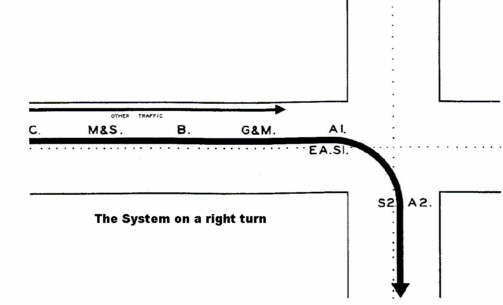 .
. .
.
Down through the History of driving there have been two main styles of driving. The first grew out of the “T” model Ford, which was the worlds first popular car. Henry Ford set out to make an affordable car for the masses. The “T” model or “Tin Lizzie” as it was popularly known had a two-speed transmission, which was shifted by foot pedals. The left pedal (where the clutch is on a modern vehicle) was held down for low gear and released for high gear. The right pedal was the brake and is un changed in a modern vehicle. There was an extra pedal in the middle that was held down for reverse. A small “Button” pedal beneath the reverse pedal was the accelerator (so that has been moved to the right since the mid 1920s).
The brakes wore out quickly because of the material that was used in them, so the 'old timers' learned to stop the “T” with minimum use of the brakes. They would first lightly press the brake with their right foot and hold down the left pedal to engage low, then using their left foot they pressed their toe to hold down the reverse pedal and with their heel the would press the accelerator to rev the engine. (This is where the term: "Heel & Toe" first came from. It is also where the expression "When in doubt, both feet out" came from). When the vehicle stopped they had to pull on the handbrake quickly to stop the vehicle going backwards. The handbrake had the dual purpose of also shifting the gear to neutral.
This style became locked in the psyche and was handed down through generations. It was backed up by the saying "I use my gears to save my brakes".
The second style happened in England. In the early days of motoring the British Government enacted a strange law that any motor vehicle being driven on a public road had to be preceded by a person waving a red flag by day or a red lantern by night. This meant of course that horses were faster, and the motor vehicle industry didn’t develop in Britain until the law was repealed. In the early thirties very few British people had a vehicle and the average police officer had little or no driving experience. On the job police driver training was rudimentary. Not surprising, the British police were having serious vehicle crashes. In 1936 a parliamentary inquiry, headed by Lord Cottenham, was set up. Lord Cottenham called for evidence from all over the world and after several months his team came up with a system of driving which was called the “Hendon System” after the London Suburb where the police college is situated where the inquiry was held.
This Hendon System contained two unique features, which cut across popular driving practice of the time. First was a planning step where the driver visualized the vehicle’s intended path, speed and an area where the gear would be shifted. During training this was affirmed by the student saying “Course”. Secondly, Lord Cottenham’s committee said it made no sense to use the gears instead of the brakes to slow the vehicle down. Firstly set the vehicle at the right speed with brakes, and then shift directly to the appropriate gear with one shift.
If you were able to talk to the old “Tin Lizzie” drivers they would say, “I change my gears to save my brakes”. If you see a driver shifting down through the gears while braking today, they still say, “I change my gears to save my brakes”. It doesn’t make sense today. The top speed of the “Tin Lizzie” was about forty-eight kilometres per hour. The stress on the drive train of a modern vehicle when shifting with the brakes on is amazing. Brake pads are a fraction of the cost of clutch, gearbox, trans-axle or differential.
The main problem is not the vehicle stress but the driver’s reaction. Over the years all of the research suggests that Lord Cottenham was right.
Drivers who shift down through their gears during braking are more likely
to react badly when faced with a sudden emergency than those who train
their mind to use brakes and gears separately. (See
Five Great Driving Habits).
 |
C.
Course Selected
M&S. Mirror & Signal B. Brake G&M Gear & Mirror EA. Evasive Action A1 & A2 Acceleration Points S1 & S2 Skid Potential Area |